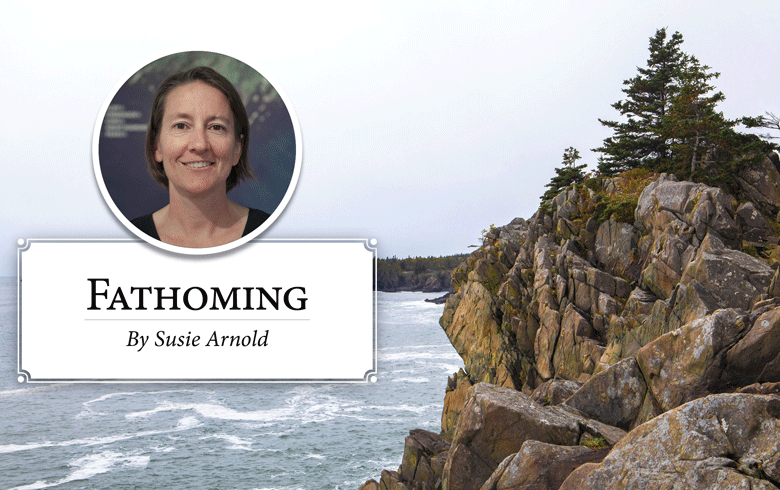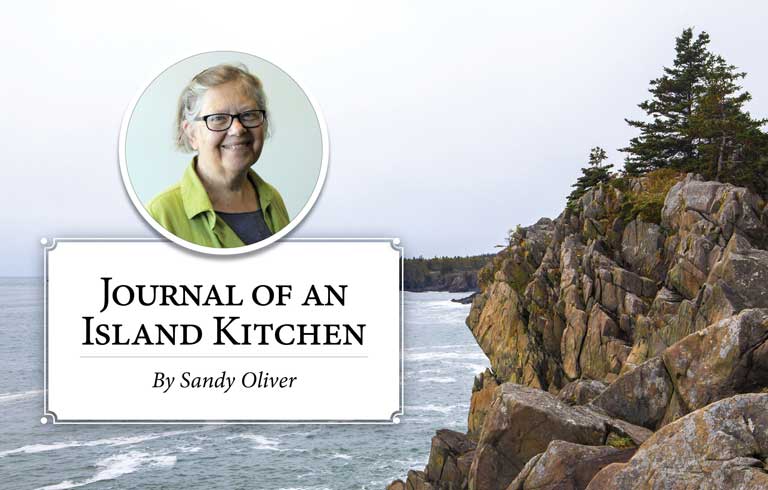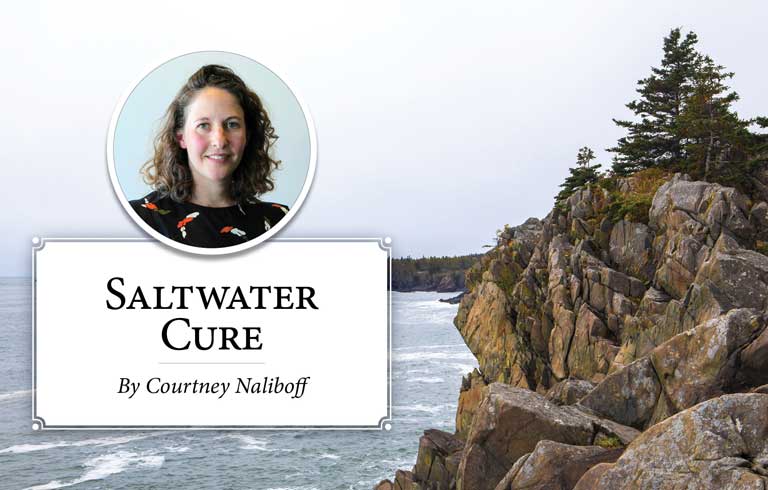“Change is the only constant.” That’s one of the memorable sayings of my graduate school advisor, Dr. Bob Steneck. I started my career in Steneck’s lab, researching how the abundance and composition of seaweeds on Caribbean coral reefs can make or break the start of life for baby corals.
As I was working on my thesis, “Running the gauntlet to coral recruitment,” my colleague Dr. Doug Rasher, now a senior research scientist at Bigelow Laboratory for Ocean Sciences, was studying cold water seaweeds and their role in temperate ecosystems. Our paths crossed at UMaine’s Darling Marine Center, where Rasher did his post-doctoral studies with Steneck. Since then, Rasher has been tracking changes in the make-up of seaweeds in the Gulf of Maine.
Nine years ago, I interviewed Rasher’s student, Dr. Thew Suskiewicz, a former technician in the Steneck lab, and now phycologist at Atlantic Sea Farms, Maine’s first farmed kelp processing company. I hope by now you’re picking up on Steneck’s contribution to training marine ecologists in Maine (see the interview with him in this issue).
Kelp forests have largely collapsed in the south, with the boundary of that shift currently around Penobscot Bay.
Again, times are changing. Climate change is “rewriting the rules of nature” as Rasher, Suskiewicz, Steneck, and colleagues wrote in 2024 in the journal Ecology. Now Rasher’s team is seeing a shift from kelp to turf algae, progressing up the coast as the Gulf of Maine warms. Kelp forests have largely collapsed in the south, with the boundary of that shift currently around Penobscot Bay.
“Over the last five years, this shift has continued to unfold right before our eyes. In the Midcoast, our sites were kelp one year, and turf the next,” Rasher said, describing the flip he and his students observed.
For those who are not seaweed buffs, kelps are large, canopy-forming, brown macroalgae that provide important habitat and food resources for numerous marine organisms. “Turf” algae, on the other hand, refer to small, carpet-forming red (in this case) algae. The shift triggers a loss of animal habitat. For lack of a better analogy, think of a forest shifting to short crab grass.
The consequences of such a shift aren’t fully understood, but what we do know isn’t good. Kelp forests provide a number of ecosystem services, and the more biodiverse the composition of kelps the better.
Kelps grow quickly, taking up nutrients and carbon dioxide. They fuel nearshore food webs, providing energy to fish. Wild kelps also supply the seeds for kelp farms.
The species of turf algae that are taking over may decrease oxygen on the seafloor. Additionally, these turfs create a different chemical and microbial landscape, one that can actually inhibit the survival of new kelp. So, similar to baby corals requiring a hospitable nursery habitat to successfully regenerate a tropical coral reef, baby kelps also require a seafloor that is not hostile.
There are steps we can take to bolster the resilience of remaining forests, which still cover over half of the expansive Maine coast, mostly to the east of Penobscot Bay. One important step is to ensure that sea urchins remain rare in the ecosystem, to prevent deforestation.
Rasher also promotes the idea of “fortifying the front lines” where turf algae are encroaching. In addition to mitigating warming, improving the receptivity of the seafloor for kelp restoration would help. He and a group from Maine recently visited Portugal to learn about kelp restoration efforts that are currently underway.
From my perspective, whether it’s a coral reef or a kelp forest, ensuring that the broader public has a glimpse into the beauty and function of these important ecosystems is a first step to their preservation. A documentary called Sea Change: Peril in the Gulf of Maine, recently on the PBS show NOVA, features a beacon of hope.
Cashes Ledge is a submerged mountain range, 80 miles off the coast, known to marine scientists, fishermen, and others to have lush kelp forests supporting a wide array of marine life. Rasher and his colleagues visited Cashes to assess its health, as part of the documentary.
“Cashes is a place that has displayed remarkable resilience, even in the face of rapid warming,” Rasher says. “It also harbors a food web that looks fundamentally different than the coast, with an abundance of fish including important kelp forest predators like Atlantic cod. It’s an awe-inspiring place, and one that can teach us what to strive for on the Maine coast.”
Susie Arnold is senior ocean scientist at Island Institute, publisher of The Working Waterfront. She may be contacted at sarnold@islandinstitute.org.





